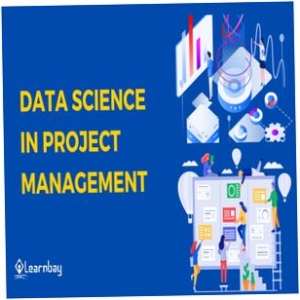Data Science in Project ManagementPosted by Rohith Reddy on August 23rd, 2022  Data usage is steadily increasing, permeating every aspect of our lives, particularly in the corporate world. Some business practices increasingly rely on data science (or some form of data analytics) to guide decision-making. This integration includes project management's professional activities. The project management field benefits greatly from data-driven decision-making frameworks, which require the project manager to be flexible and proactive in reacting to and taking advantage of what data products bring to PM practices. In this article, I'd like to focus on projects that aren't in the data science field but still have something to do with corporate world requirements and the use of data science products, services, or inputs to maximize the value of project outcomes. The Importance of Data-Driven Activities in Project PhasesConsider the following phases of a waterfall project and how they can use data science inputs in their overall landscape: The initiation phase can significantly benefit from data science through the application of statistical inference on project selection, which includes several criteria such as business relevance, social impact, or return on investment, all of which significantly impact the project's final sponsorship. Data science can add enormous value to the monitoring and controlling phase, from statistical regression techniques to measure performance to identifying risk mitigation plans through decision trees (including optimization techniques for constraint management, among other things). Check out the Data Science Course and Business Analytics Course to familiarize yourself with these terms. A significant portion of planning activities involves gathering current-state information about project variables to make assumptions about risk, cost, performance, and other constraints associated with planning outcomes. If statistical models are used to model variables and constraints, we should see a lower deviation from the baseline of performance metrics. In terms of project execution, I would argue that change management is the most natural project management activity that can benefit from using data-driven inputs to speed up decision-making. Without attempting to be exhaustive, the following are some characteristics to look for in a data product: 1. Incorrect business question: Every data-related project begins with an unresolved problem or issue, but the end results do not always reflect the original question. A PM must understand the primary goal of the data product under consideration, especially if it is a repurposed product that originally addressed a question that is irrelevant or unaligned with the current project's outcomes or charter. The issue is not so much the reuse as it is the fact that the data sources, assumptions, and data treatments are used while the problem is being solved. If it does not align with the project's business outcome, you may need to request a reasonable justification for its application and use within the context. 2. Cherry-picking: When using data-driven insights, you must be aware of the data team's biases while working with it. These may be the same or different from those in the source data; understand which ones were preferred and why. You must have a broad understanding of the handling process to identify gaps in the information or data peculiarities (like the standardization method used or, in the case of predictive or prescriptive analytics, the model selection procedure). Your goal is to comprehend the degree of business influence in the data manipulation process (and you may find that no business context input influenced the result at all). 3. Validation: The validation and testing methods used for predictive or prescriptive data products must be explained. As with the other points on this list, a PM should remember that they are responsible for the outcome. The data product is a tool; you must determine its utility for your project. Inquire about the testing method, its reasons, and the insights used in separating testing and training sets. Compare your knowledge of data-driven decision-making concepts to the answers to those questions. 4. Production context: If the data product challenges the status quo of a variable or other aspect of your project, you'll need to step back from the immediate implications and learn more about the expert's interpretation(s). Remember that statistical analysis is a decision-making tool. The statistical analysis conclusion, p-value, or any other type of statistical indicator results from a model built on several assumptions. The Benefits of Project Management in a Data-Driven WorldEvery business activity benefits significantly from the collaboration of various professional disciplines. Take the first step and expose yourself to questioning; this will provide you with a better understanding of the data team's motivations and interest in the project. Simultaneously, the team can gain invaluable insight into how to improve the quality of its data products. Do not conclude any data-driven evaluation exercise without thanking the team. At the end of the day, if you have the good fortune to work with a data team constantly striving to improve project outcomes, consider yourself lucky. Making data-driven decisions has always been a part of the project management profession—and it is becoming more popular as the market introduces more products and data-handling techniques become more affordable and user-friendly. Every profession evolves with new practices and points of view, so we should all leverage industry and occupational trends with our core professional values. Check out the Data Science course in Delhi to gain a better understanding of data science and methodologies, as well as how to effectively use them in the realm of project management. Like it? Share it!More by this author |


